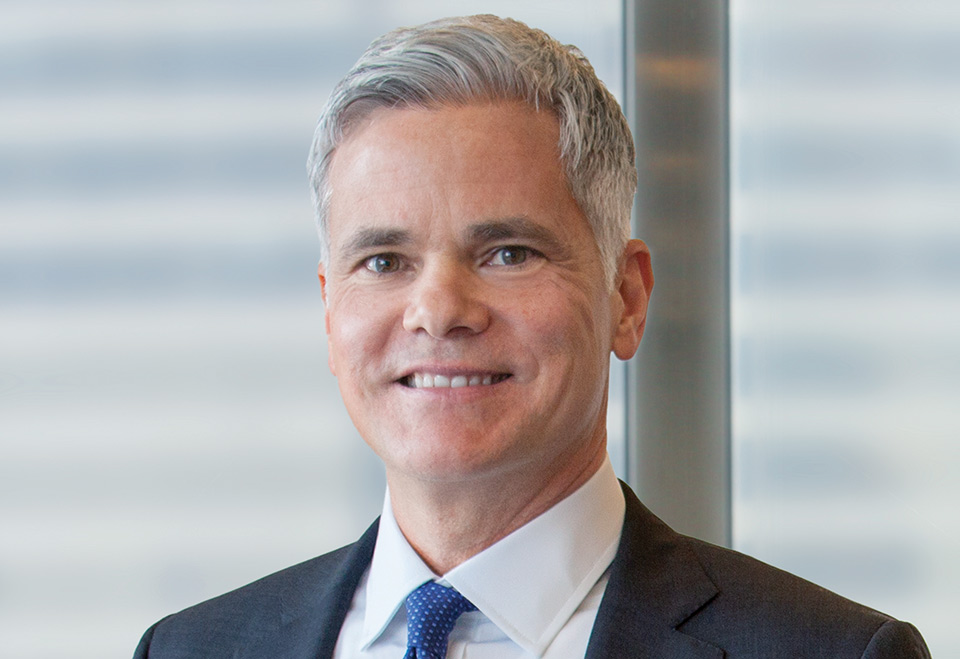Determined that JPMorgan bankers should not just come back to the office, but also travel to see corporate executives in person, Jamie Dimon invited the bank’s senior management to accompany him to Europe in November for a series of client meetings.
After re-acquainting himself with the delights of airports in the UK, France, Spain and Italy, Doug Petno, chief executive of commercial banking at JPMorgan, sits down with Euromoney to review progress on the bank’s effort to win over more mid-market corporates around the continent.
I am encouraged by the good reception we’ve had from clients since our arrival
Doug Petno

This began in 2019 and, even after two years spent in a pandemic, has seen the business hire new country heads across Europe and make strides winning over a target list of 1,000 possible new customers among companies with revenues of anywhere from €200 million to a few billion euros.
JPMorgan took a highly data-driven approach to identifying these possible new clients. Petno says it now banks several hundred of them.
He offers an intriguing insight into the corporate mindset, amid concerns over the virus and over inflation.
“You ask companies if they are hiring and paying more and whether they can pass on higher in-put costs to customers, and most of them say ‘yes’,” says Petno. “Many took serious actions amid the lockdowns to cut costs, term out debt and shore up their balance sheets. Default rates are near zero and margins are decent. But even companies that have pricing power amid high demand are not borrowing against those cash flows for capital investment to expand production into the reflation trade.”
So how does this play out for the bank?
“Loan growth is relatively anaemic,” he says. But the bank is not waiting for companies to take out loans.
“We’re focused on bringing innovative cash management solutions, liquidity optimization, more efficient middle office technology. Client response to our cross-border payments solutions has been very robust, and our outlook for investment banking, M&A and equity financing in particular is quite strong.”
Template
When you are as big as JPMorgan, it is not obvious how to grow. But the push in Europe follows a template set by the commercial bank after the crisis-era acquisition of Washington Mutual to win over mid-market companies in the south-eastern US and California that now bring it roughly $1 billion of annual revenue.
European banks are meant to be defending their own turf with greater resolution after a string of retreats from the biggest market for banking revenues, but, then, California was Wells Fargo’s backyard. There is always an incumbent.
“That said, I may not have had the courage to do this in Europe, if JPMorgan’s private bank and investment bank were not so long established and so strong here,” says Petno. “But that gives us a meaningful starting point and makes it easier to hire people.”
And maybe the incumbents are a little more comfortable than they admit.
Petno reports: “It’s competitive, but no more so than anywhere else. I am encouraged by the good reception we’ve had from clients since our arrival.”
It is not immediately obvious, but these commercial bank client wins often show up in investment banking transactions. So, it was the efforts of the commercial bank that led to JPMorgan playing a lead role, along with BNP Paribas and Citi, on the IPO in October of French technology company OVHcloud. This follows its lead in another French IPO for a new client, digital music company Believe.
We can dramatically scale who we serve, time to market and unit economics
Doug Petno
Looking further back, it was the commercial bank that led to JPMorgan acting as joint global co-ordinator with Barclays on a green bond deal for Italian energy company Falck Renewables in September 2020 and as sole global co-ordinator on a convertible bond deal for Dutch pharmaceutical company Pharming that January.
“We asked ourselves in 2019 if there were interesting companies for us that we were not covering and if we had the scale to cover them,” Petno says. “We have now built a good pipeline of business and believe this is a substantial opportunity for JPMorgan if we invest for the long-term, remain disciplined and selective on clients and work very hard to deliver valuable ideas, solutions and capital.”
Corporate chief financial officers and treasurers won’t rush to shift to new cash management and payments providers, especially not in a pandemic. The lead times can be long and consultations expensive. JPMorgan has also had to invest in talent.
Bernhard Brinker joined as head of corporate client banking for the Germany, Austria and Switzerland (DACH) region in January 2019 from UniCredit; Marco Mariano, as head of corporate client banking for Italy, arrived in February 2019 from HSBC; Hein Broerse took that role for the Netherlands in December 2018, coming from Citi; Catherine Pierre also switched from Citi in May 2019 to head the UK effort.
Olivier Simon, who already worked at JPMorgan, leads in France while another internal mover, Julio Meseguer, heads the Iberia region.
While these bankers may see the chance to make a difference in a new start-up effort for JPMorgan, they are still joining an industry-leader.
Part of their pitch to those mid-market and some quite large corporate clients in Europe is that JPMorgan can bank them internationally, not just in the US but in China, the rest of Asia and Japan.
Fintech acquistions
It is also a bank confronting the threat from fintechs more aggressively than many of its peers by acquiring some of the best of them. Petno points back to the acquisition of US healthcare payments firm InstaMed in 2019, then JPMorgan’s biggest acquisition since the financial crisis.
“InstaMed immediately gave us a product capability and a tremendous client franchise that has worked really well for the commercial bank,” he says. JPMorgan has also been innovating in payments, including at the outer edge in blockchain, digital deposits and instant transfer.
“We are delivering streamlined B2B and B2C payments solutions, optimizing liquidity globally, and using data and analytics,” Petno says. “This is very different to banks’ traditional service of simply making transfers and holding deposits.”
The bank’s recent spree of fintech acquisitions includes Nutmeg in the UK as well as the in-car mobile payments division of Volkswagen Financial Services, alongside many others in the US.
Petno says: “Fintechs start typically in one product silo to attract customers. There’s a race between how fast they can monetize that single product expertise and how quickly the incumbents can innovate. We have the clients already, so there’s a revenue multiplier when JPMorgan acquires a new capability to apply to its existing offering. We can dramatically scale who we serve, time to market and unit economics.”




